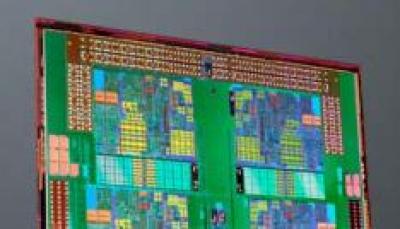Dell, HP And Sun Get Behind AMD’s Istanbul Opterons

AMD’s Istanbul gets encouraging nods from all the right people
Dell, Hewlett-Packard and Sun Microsystems have all promised to make servers based on AMD’s six-core Opteron x86 chips, code-named Istanbul. Cray is also using them in its supercomputers.
The Istanbul processors, launched this week to compete with Intel’s Nehalem chips, got a warm welcome from server makers including Dell, HP and Sun, and some broader support, with Cray promising to use them in its high-end XT5 and midrange XT5m supercomputers, and SGI planning to use them in servers and storage devices.
The systems makers praised the performance, virtualisation and energy-efficiency enhancements of the Istanbul processors, which AMD launched on 1 June. The processors will show up in HP’s sixth-generation ProLiant systems, originally introduced in March to coincide with Intel’s launch of its Xeon 5500 Series “Nehalem EP” processors – Paul Gottsegen, vice president of integrated marketing for HP’s Enterprise Servers and Storage unit, said in a blog post.
HP’s G6 ProLiants, which comprise everything from tower and rack servers to blades, offer a host of new features designed to improve manageability, virtualisation and energy efficiency in the system. The features include what HP calls the Sea of Sensors, a collection of 32 sensors throughout the server — including the power supply, hard drive, processor and memory stick — which monitor thermal conditions, giving users data needed to run the systems most efficiently, according to HP.
In addition, HP’s Dynamic Power Capping lets managers dynamically set the power drawn by systems. The ProLiant Onboard Administrator enables customers to monitor server health from any location, and HP Insight Control Environment lets administrators manage their server infrastructures on-site or remotely.
“We are really excited about Istanbul and you can bet that we’ll be introducing new AMD-based rack, tower and blade servers in very short order,” Gottsegen said.
Dell likes the way they virtualise
Likewise, Armando Acosta, a product manager for Dell’s PowerEdge servers, said in a blog post that Dell will roll out Istanbul in the PowerEdge 2970, R805 and R905 rack servers and PowerEdge M605, M805 and M905 blade servers.
Acosta wrote that Dell and AMD have been working closely on optimising virtualisation on AMD-based PowerEdges, and that with the new AMD Opterons, users could see as much as a 38 percent increase in virtualisation performance.
“Virtualisation is one of the most effective ways for companies to improve server utilisation and improve data centre efficiency,” he wrote. “Our customers adopting the new Istanbul platform will see even greater virtualisation performance with the new Istanbul processors.”
Sun also will use the new AMD Istanbul chips in its rack and blade servers in configurations ranging from two- to eight-processor sockets, Dimitrios Dovas, director of systems marketing for x64 volume systems, said in a blog post.
“Sun is committed to continued innovation along our x64 road map. Companies small, medium and large are turning to Sun to quickly and easily upgrade, consolidate and virtualise their data centres to drive the overall efficiency and cost improvements their businesses demand,” Dovas said.
AMD officials have said Istanbul—with its performance increases, energy efficiency and virtualization capabilities—will play well in the HPC (high-performance computing) space.
Cray’s supercomputer endorsement
In another blog, Barry Bolding, vice president of scalable systems at supercomputer maker Cray, said Cray will use the Istanbul chips in its high-end XT5 and midrange XT5m systems. The use of the chip will quickly ramp up the scalability and performance of those systems, offering 12 cores per dual-socket node, he said.
For the XT5m, Istanbul will mean being able to put 1,000 to 6,000 cores and 10 teraflops to 60 teraflops of performance into a single system. The high-end XT5 will be able to pack more than 300,000 Istanbul processing cores, Bolding said.
“This new six-core AMD Opteron processor technology from AMD included in our XT5 and XT5m systems will mean more performance at a low cost, superior efficiency and more scalability,” he wrote. “It means that researchers, scientists and engineers that utilise Cray supercomputers can now leverage a dramatic increase in computational power to address some of the world’s most challenging and sophisticated problems.
“Silicon Graphics International – – also is outfitting a host of its servers and storage devices with AMD’s new processors.